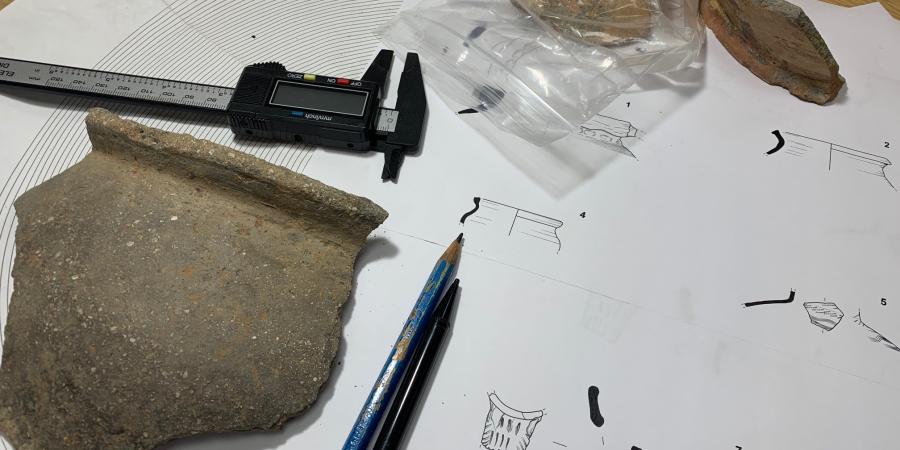Next in the series is Esther Escudero, an experienced Archaeological Illustrator who moved to Britain in 2015. Originally from Madrid, Esther has worked in the Heritage sector since 2007 but Esther's career as an Archaeological Illustrator really took off in 2012.
Early in the morning, I start my day with a big cup of black coffee and check through my emails to see if there is anything urgent to resolve for previous illustrations made for evaluation/watching brief publications. If so, I deal with the matter quicky so that it is ready for the manager to send to the client.
Once the urgent tasks are aside and resolved, I can now start with my hand drawings of the artefact list sent some days ago. I prepare a large table that I have close to my normal desk, I need a lot of space because some of the vessels used to be quite large. Other vessels are smaller but have been broken into many pieces, so I need to “do the puzzle” before starting any measurements or drawings.
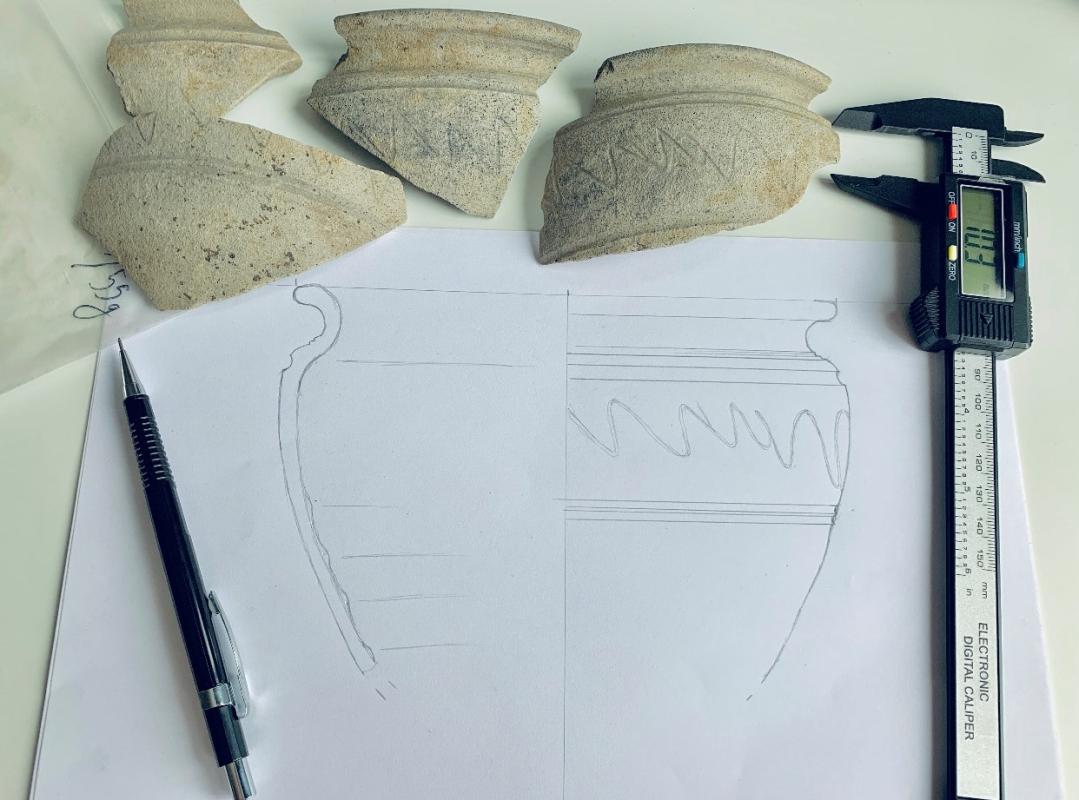
Using different tools like a caliper, a ruler and a profile gauge, I proceed taking measurements of the selected vessel. I need to know the diameter first (mainly if it is a border or a base), and then check how tall it will be so I can decide the best way to represent it over A4 or A3 paper. Afterwards, I need to measure the thickness of the profile so I can draw the left profile of the vessel and the frontal elevation of it in one single view. Now, we need to check if it has some decoration over it. I have several different lamps at home, some are LED lights: this is useful as I can put them closer to the sherd to see how thin the decoration is or how it’s has been done. Some decorations are so pale or fine they are not visible under normal light, so I need to work with the orientation of the fragment to have some “rising” light over it. Finally, I measure the decoration on the vessel and reproduce it carefully using the same thin pencil.
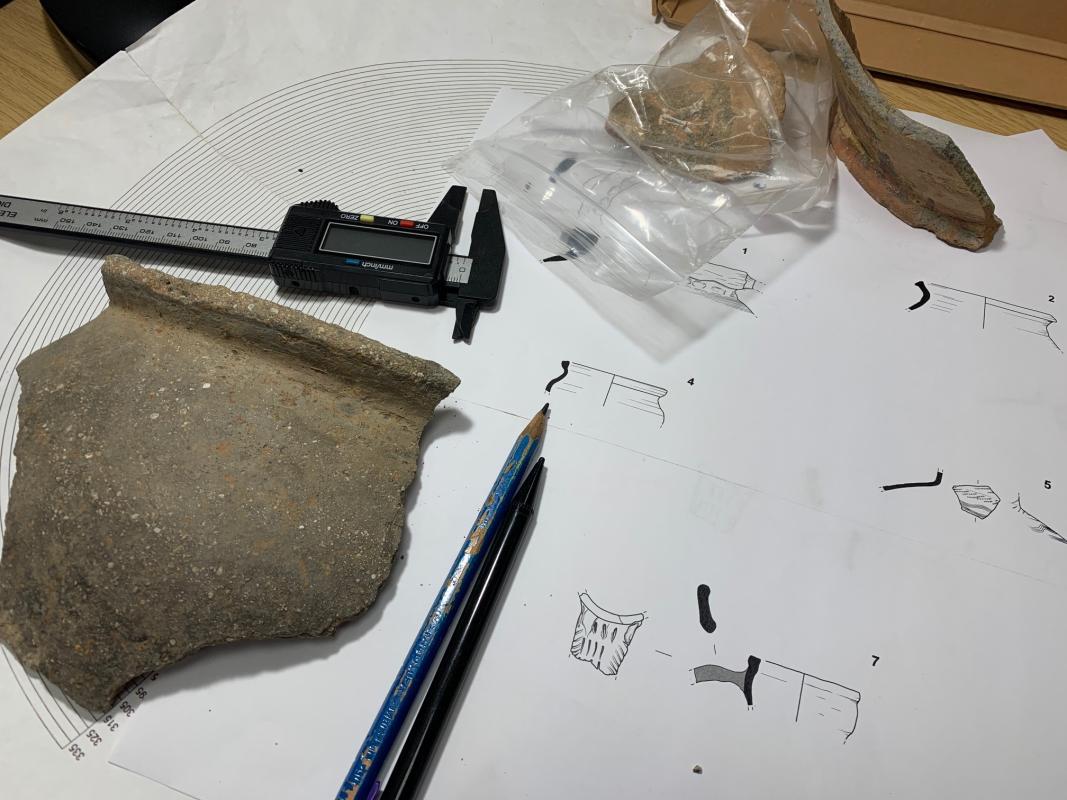
I now put all the fragments back into the correct bags numbered by the specialist and make sure I’ve not misplaced any sherds into another context bag.
I am now finishing all the pencil drawings of the selected vessels. The pottery is drawn in scale 1:1 as it is a lot easier for the illustrator, and then I will reduce them later to 1:3 or 1:4 using the computer before the final presentation.
After the pencil process (and before the final ink tracing of it), I take some time to scan all the drawings and send them to the specialist to be checked over.
Lunchtime! As I am home, I prepare a quick good meal (and more coffee) and go back to my desk to see if there are any more emails from another project. Sometimes I receive information that needs to be uploaded onto our website, so I take some time to prepare, edit and publish the text and photos onto the website – this may be a new webinar, vacancy, recent publication or the profile of a new starter in the company.
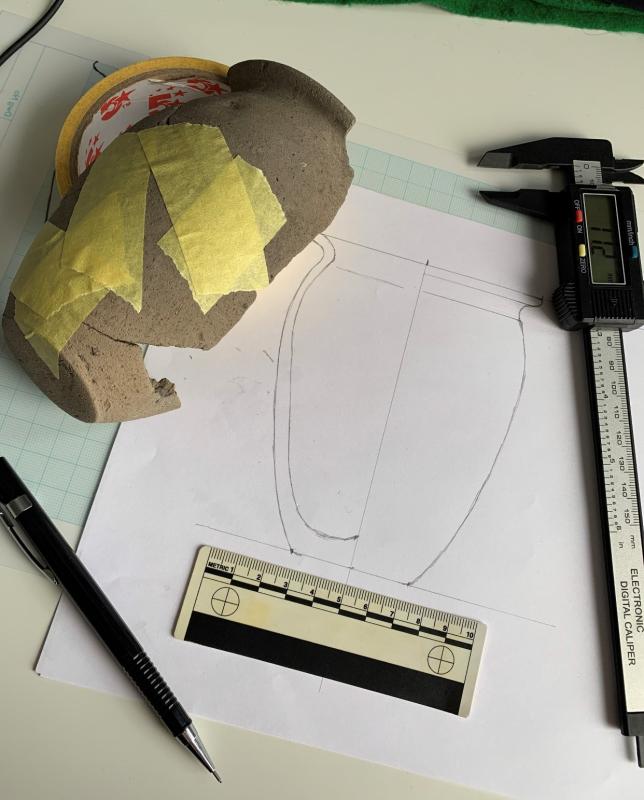
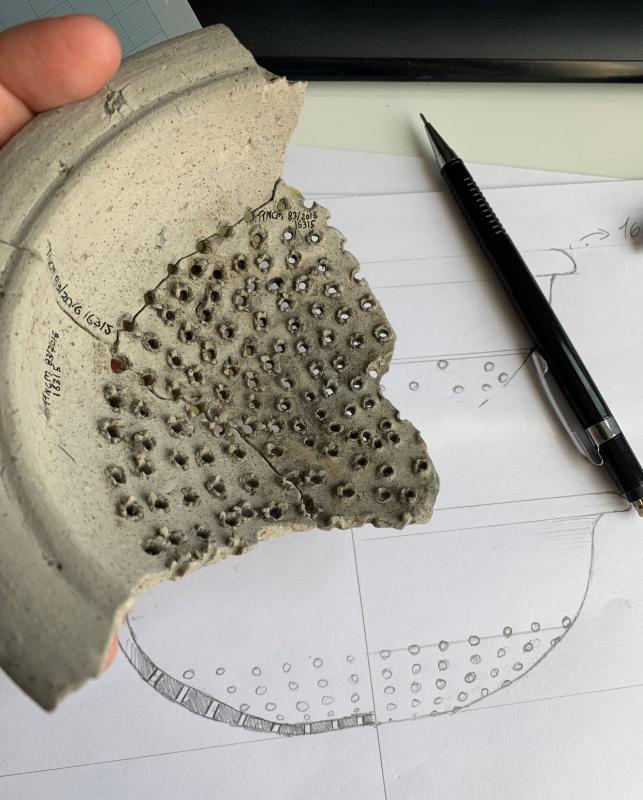
After lunch I come back to my big table to get some more drawings done, always checking carefully that all of the bags are in the right order inside of the boxes so I don’t get lost among the many sherds every morning! The order is very important in finds drawing, having a clear space on the table helps to avoid accidents and mistakes. Cleaning before and after is very important too, or even wearing a face mask as the pottery and other objects can be very dusty.
At the end of the day, I organise the boxes and close them back, clean my work space, wash my hands, check emails again and have a call with my line manager to check the amount of work done or still coming for the next day.
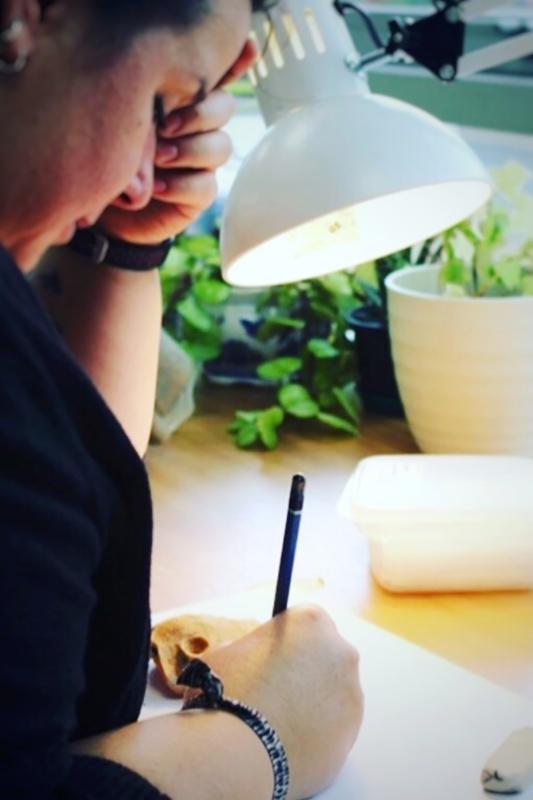
by Esther Escudero, Illustrator
